Cycling Power Zones: Training Zones Explained
Cycling intensity levels are commonly organized into Power Zones, with each zone matching a percentage of your FTP (Functional Threshold Power). Every zone offers unique benefits and adaptations, as each activates the body’s energy systems in a different way. Balancing time in power zones is crucial to proper training.
What are Cycling Power Zones?
Power Zones, also known as power levels, are a useful way of describing the spectrum of cycling intensities. Power Zones are partly rooted in physiology, reflecting the distinct energy demands that occur in the body as effort changes. They are also pragmatic, condensing a continuum of exercise intensity into separate levels which can be more easily applied to training. TrainerRoad uses a 7-zone system based on the research of Dr. Andrew Coggan.
How are the Zones Determined?
Power Zones are defined as a percentage of your Functional Threshold Power (FTP). We use the Ramp Test to find your FTP, then calculate your zones and automatically scale your workouts to your measured fitness. In practice, FTP represents the level of cycling intensity you could theoretically maintain for an hour. Physiologically, FTP is an estimate of when lactate begins accumulating in the blood- roughly the point at which the body’s ability to maintain and fuel steady effort begins to break down. Ride below FTP, and you can continue for an extended period; ride above FTP and your ability to sustain rapidly declines.
Adaptive Training
Get the right workout, every time with training that adapts to you.
Check Out TrainerRoadPower Zones Defined
| Training Zone | Power |
Rate of Perceived Exertion (RPE) |
|---|---|---|
| Active Recovery | < 55% FTP | 2 / Recovery |
| Endurance | 55% – 75% FTP | 6 / Easy-Moderate |
| Tempo | 76% – 87% FTP | 7 / Moderate |
| Sweet Spot | 88% – 94% FTP | 7 / Moderate |
| Threshold | 95% – 105% FTP | 8 / Moderate-Hard |
| VO2 Max | 106% – 120% FTP | 9 / Hard |
| Anaerobic Capacity | > 120% FTP | 10 / All-Out |
Zone 1: Active Recovery
Powered by the body’s aerobic system and relying almost entirely on type I (slow twitch) muscle fibers, this pace is easy to sustain almost indefinitely. Riding in this zone offers subtle benefits, such as facilitating lymph flow, improving circulation, and stimulating transport of nutrients to the muscles. It also helps to reinforce movement patterns and can be used to add time in the saddle without creating much muscular or metabolic stress. In training, Active Recovery is mostly used for rest intervals between hard efforts, allowing you to catch your breath, lower your heart rate, and clear waste products from your muscles.
Zone 2: Endurance
Also almost totally aerobic and relying on Type I muscle fibers, Zone 2 stimulates more adaptation and creates a bit more fatigue than riding at a recovery pace. Still, this intensity level is sustainable for a very long time, as its name indicates. Endurance rides increase the mitochondrial density, capillarization, and aerobic enzyme content of muscles, which all work to improve your aerobic capacity. The body is able to utilize fat for fuel at this intensity, and the ability to do so becomes more efficient over time. Endurance pace forms the bulk of most long rides, and during any mass-start event you’ll spend lots of time here while sitting in the pack. In a training plan, Endurance rides are a great way to reinforce movement patterns and add training stress without adding much fatigue.
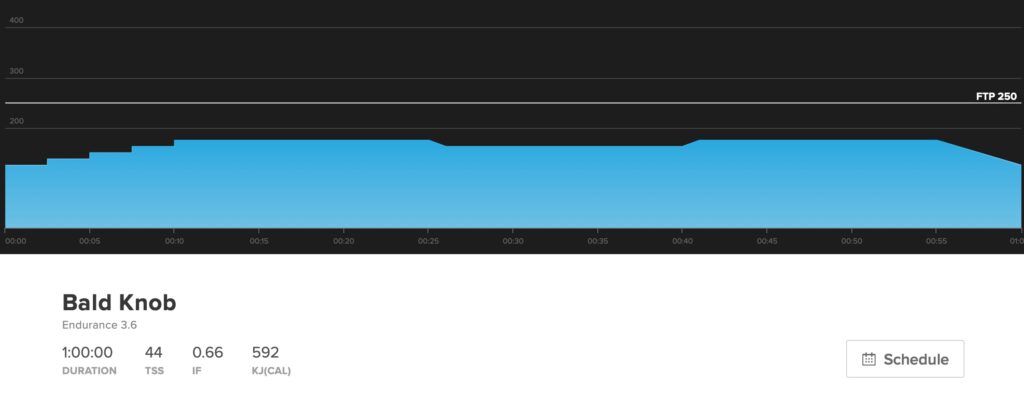
For more on Endurance training check out our article: Endurance Training for Cyclists: Where Zone 2 Fits in Your Training Plan
Zone 3: Tempo
Tempo is still primarily aerobic, but riding at this intensity begins to recruit some Type IIa muscle fibers. This is the first zone that feels challenging to sustain over long periods as it adds some muscular endurance demands. Tempo stimulates many of the same adaptations as endurance riding but with more pronounced effects, particularly in improving the abilities of the muscles to store glycogen. The fatigue created by riding for long periods at Tempo is much higher than at Endurance pace, but still relatively low.
Zone 4: Sweet Spot
Sweet Spot is a transitional zone, defined more by its applicability to training than by distinct physiological differences. It is the gray area between Tempo and Threshold, and combines the most beneficial training aspects of both. This is how it gets its name, as the most useful and time-effective zone for general purpose fitness improvements. Sweet Spot activates more Type IIa muscle fibers than lower intensities, and triggers significant adaptations in muscular endurance, aerobic fitness, and glycogen storage. It is challenging and fatiguing to sustain for long periods, but not nearly as difficult or exhausting as riding at Threshold.
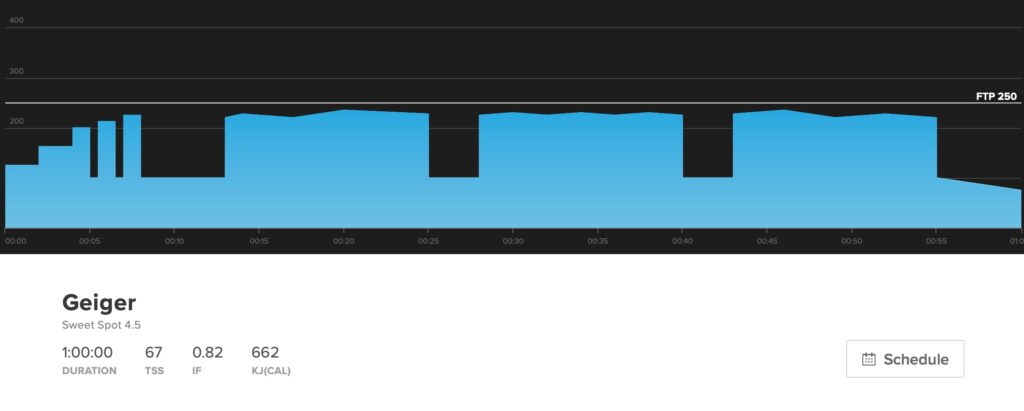
For a guide on Sweet Spot training check out our article: Sweet Spot Training: Everything You Need to Know
Zone 5: Threshold
Close to your FTP, riding at threshold is highly glycolitic, shifting fuel demands from fat to sugar. It activates a large volume of type IIa muscle fibers, and places significant stress on muscular endurance. Riding in this zone helps to increase blood plasma volume, increase mitochondrial enzymes, and improve the ability to maintain high intensities for long periods. It also generates significant fatigue. While theoretically a pace you could sustain for an hour, in practice most athletes find riding at threshold quite uncomfortable for any longer than about 20 or 30 minutes at a time.
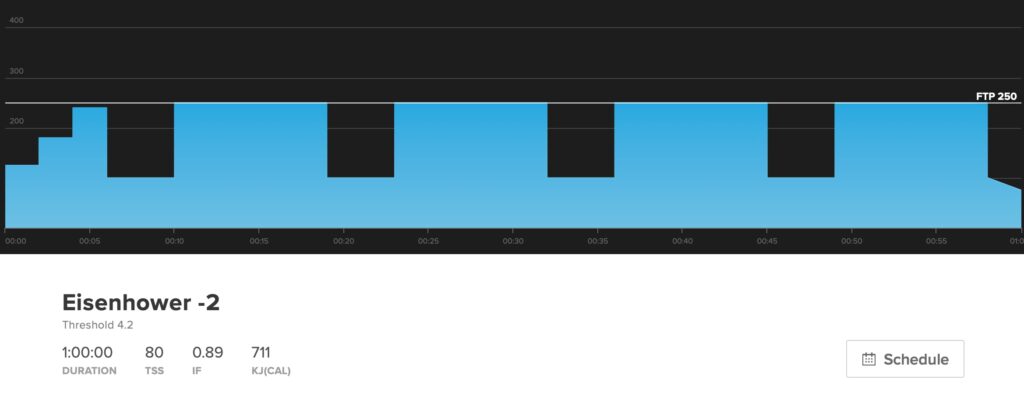
For more on the Threshold training zone read our article: What Is Lactate Threshold and How To Train It
Zone 6: VO2 Max
The term VO2 Max refers to the maximum amount of oxygen your body is able to utilize during exercise. This zone encompasses high intensity efforts that push this cardiorespiratory capacity to its limit. Riding at VO2 Max relies primarily on type IIa muscle fibers, and places a high demand on both aerobic and anaerobic capacities. It stimulates cardiac remodeling, improving the strength and stroke volume of the heart, and significantly increases blood plasma volume. VO2 Max efforts are highly fatiguing and can only be sustained for several minutes, but create a very high training stimulus in minimal time.
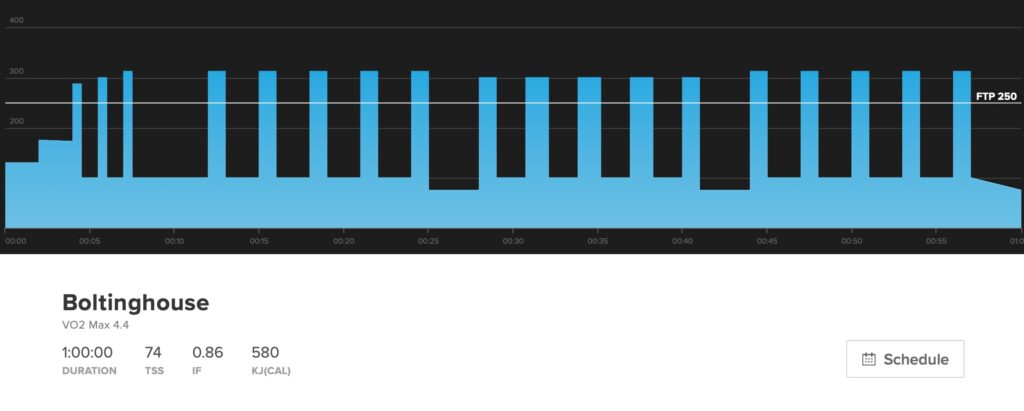
For a deep dive on VO2 Max training read our article: How to Improve Your VO2 Max and Get Faster With Structured Training
Zone 7: Anaerobic Capacity
At this highest level of intensity, power is generated exclusively through anaerobic metabolism, with type IIb fibers doing most of the work. These efforts are higher-force and shorter duration, activating energy systems that can only be sustained for minutes, at most. Riding in the Anaerobic zone improves lactate tolerance and increases the body’s ability to utilize anaerobic energy stores. All-out maximal efforts, lasting just a few seconds during a hard sprint, further challenge the neuromuscular system and improve the ability to recruit available muscle. These efforts have a much higher strength demand than other cycling intensities, and are the most rapidly fatiguing and least-repeatable.
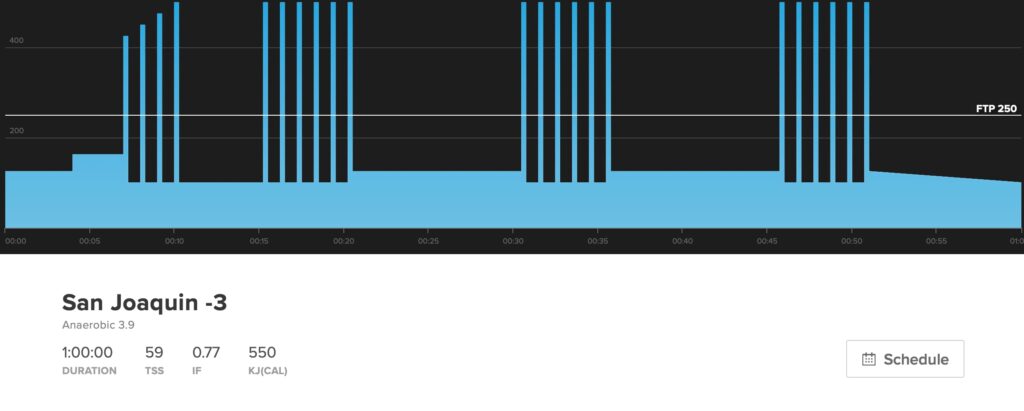
For more on the anaerobic system read our article: Anaerobic Energy System: What It Is, Why It’s Important, and How to Train It
How Power Zones Are Used in Training
In every TrainerRoad training plan, time spent in different zones varies across the cycling season. The Base phase builds long-lasting, general-purpose fitness through time spent mostly in aerobic zones. Build and Specialty phases add more high-intensity anaerobic efforts to develop the specific abilities you’ll need on race day.
Within a training plan, some workouts target more than one energy system, while others focus solely on one level of intensity. Riding at each zone sends a distinct adaptive signal to the body, and some of these signals work best in isolation, while others can be mutually beneficial. As an example, some workouts begin with hard efforts in the VO2 Max zone, and then follow with a longer, Endurance effort. These zones complement each other, whereas VO2 Max efforts before Anaerobic sprints, for instance, would serve to weaken each other’s effect.
Training the Right Power Zones for Your Discipline and Goals
All TrainerRoad training plans strategically stress each of the energy systems used in cycling. Training each energy system requires a specific stimulus and is related to each of your power zones. Riding in each zone sends a unique signal to the body, which then drives adaptation. However, each discipline and type of event require different types of fitness.
For example, a full-distance triathlete won’t need much time in the anaerobic capacity power zone, whereas a criterium racer will spend a significant time in that zone. During the Speciality Phase, these athletes will be using different cycling power zones to specialize their fitness.
Cycling Power Zones in Summary
Power Zones describe the body’s response to cycling at changing intensities. Cycling effort occurs on a continuum, with small increases gradually shifting energy system demands. Power Zones quantify this continuum in a way that is both reflective of physiology and applicable to training. By carefully balancing time spent in each zone, TrainerRoad makes your training as effective as possible, maximizing your gains and minimizing the effects of fatigue.
For more cycling training knowledge, listen to the Ask a Cycling Coach Podcast— the only podcast dedicated to making you a faster cyclist. New episodes are released weekly.
Reference:
Allen, Hunter and Andrew Coggan, PhD. Training and Racing With a Power Meter (2nd Edition). Velo Press, 2010.
